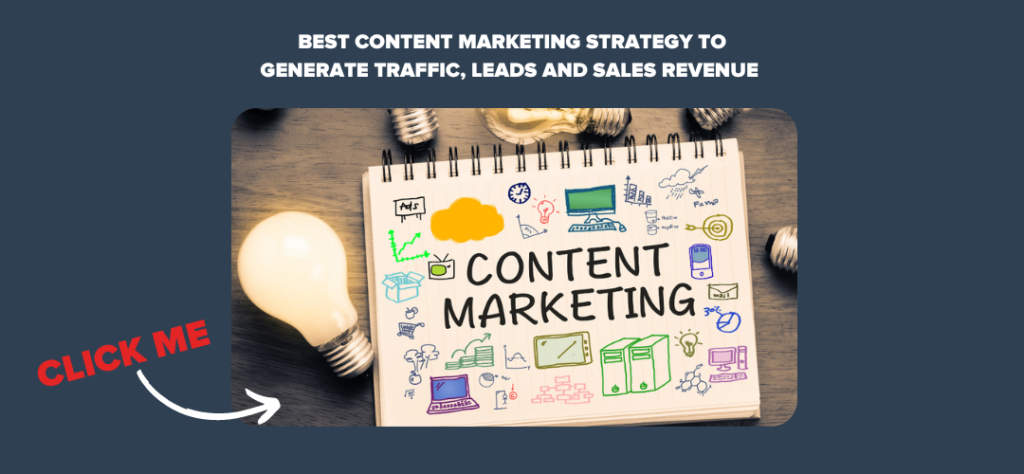Marketing can feel like a never-ending list of repetitive tasks, can’t it? Sending emails, tracking leads, following up, analysing data—it’s easy to feel overwhelmed by the sheer volume of work. You’re not alone if you’re wondering how to get more done without burning out your team or yourself. What if you could automate many of these tasks, freeing up time to focus on strategy, creativity, and real growth?
That’s where marketing automation comes in.
With years of experience in digital marketing, I’ve seen firsthand how businesses transform when they implement automation. It not only streamlines workflows but also nurtures leads, improves personalisation, and, ultimately, drives more revenue.
In fact, at RedPandas, we use a combination of AI and Marketing Automation to produce over 65 pieces of content every single week.
In this guide, you’ll learn exactly what marketing automation is, why it’s crucial for your business, and how you can start using it effectively.
By the end of this article, you’ll have a clear roadmap to implement marketing automation and avoid common pitfalls.
What is Marketing Automation?
At its core, marketing automation refers to software platforms and technologies designed to streamline, automate, and measure marketing tasks and workflows.
Marketing Automation is like having a virtual assistant that takes care of repetitive marketing actions, allowing you to focus on higher-level strategy and creativity.
Instead of manually sending emails, following up with leads, or tracking user behaviour, marketing automation tools handle these tasks for you.
For example, if a potential customer signs up for your newsletter, an automated system can send them a welcome email, trigger follow-up messages based on their behaviour, and even alert your sales team when that lead is ready to buy.
But it’s not just about saving time.
Marketing automation allows you to personalise your communications with customers, delivering the right message at the right time. Whether through email campaigns, social media interactions, or website activities, automation ensures that every customer receives tailored content that matches where they are in the buying process.
In short, marketing automation helps you do more with less effort, all while creating a more engaging and personalised experience for your customers.
Examples of Marketing Automation
Some examples of Marketing Automation can be seen below. As you’re reading through these examples, think about how much work it would take if you had to manually do these tasks every single time.
That’s the power of automation.

Key Benefits of Marketing Automation
Implementing marketing automation can dramatically change how you manage your marketing efforts.
If you’re not using Marketing Automation right now, you could be missing out on some of these benefits below:
1. Saves Time and Boosts Efficiency
Manual marketing tasks like sending emails, scheduling social media posts, and following up with leads can be extremely time-consuming.
With marketing automation, you can schedule and execute these activities automatically, freeing up your time for more strategic and creative tasks.
Whether it’s a small campaign or a complex multi-channel strategy, automation ensures that your marketing efforts are always running in the background.
2. Improves Lead Nurturing
Marketing automation allows you to nurture leads more effectively by sending personalised and timely content to your prospects.
Automated workflows can be set up to deliver relevant information to leads based on their behaviour, such as downloading a whitepaper or visiting specific pages on your website.
This helps move leads through the sales funnel, increasing the likelihood of conversion.
In fact, we’ve personally seen this to be extremely effective when selling courses via webinar funnels.
3. Increases Personalisation
In today’s market, customers expect a personalised experience. Marketing automation allows you to segment your audience based on their interests, behaviour, or demographic information, ensuring that each customer receives content tailored to their needs.
From personalised email campaigns to targeted ads, automation helps you deliver the right message at the right time.
Read: AI-Based Marketing Personalisation: How Does it Work?
4. Enhances Scalability
As your business grows, so do your marketing needs. Marketing automation makes it easier to scale your efforts without overwhelming your team.
You can handle larger campaigns, more leads, and multi-channel strategies without having to increase your team’s workload.
Automation ensures that your marketing efforts can grow alongside your business.
5. Provides Better Analytics and Insights
One of the biggest advantages of marketing automation is the ability to track and measure your campaigns in real time.
Most automation tools provide detailed analytics on email open rates, website visits, conversions, and more.
This data allows you to continuously optimise your campaigns, making adjustments based on what’s working and what’s not.
For example, here in HubSpot you can see some auto generated reports that help us determine website traffic from different channels over a given period of time as well as lead generation:

Top Marketing Automation Tools & Features
So, you know that it’s important, but there’s so many shiny objects to choose from.
How do you choose the tools that will help you automate exactly what you need to, without making the wrong choice?
Choosing the right marketing automation tool depends on the size of your business, your goals, and your budget.
Below are some of the most widely used platforms, each offering a range of features to support your marketing automation efforts, depending on your needs:
| Tool | Key Features | Best For |
| HubSpot | – Email automation – CRM integration – Lead scoring and segmentation – Analytics dashboards – And much more | HubSpot is an all-in-one solution for medium to large sized businesses and enterprises, providing a marketing and sales suite at a minimum. Smaller businesses could still benefit from the features that HubSpot provides, but scalability may be an issue as it can get quite pricey. See HubSpot Pricing here |
| ActiveCampaign | – Advanced email automation – SMS marketing – Basic sales automation – Dynamic content | Businesses looking mainly for email and SMS automation features |
| Mailchimp | – Simple email marketing automation – Customer journey builder – A/B testing | Small businesses or beginners starting with email marketing automation |
| Pardot (Salesforce) | – B2B marketing automation – Lead nurturing – Salesforce CRM integration – And much more | B2B enterprise companies looking to align marketing with sales teams, and whom need a very specific solution that HubSpot may not be able to provide |
| Klaviyo | – E-commerce-focused automation – Personalised emails – Revenue attribution reporting – And much more | E-commerce businesses seeking tailored marketing automation tools |
| MailerLite | – Email marketing automation – Basic segmentation – Landing page builder | Smaller businesses that want the best bang for their buck. MailerLite has one of the highest consistent email deliverability rates over time and offers a free plan for small businesses |
Key Features to Look for in Marketing Automation Tools
When choosing a marketing automation platform, it’s important to focus on features that align with your business needs.
Here are some of the top features to consider:
1. Email Automation
At the heart of most marketing automation tools is email automation.
This allows you to set up sequences of automated emails based on triggers such as form submissions, purchases, or behavioural data.
The goal is to nurture leads and provide personalised content at the right time.
2. Lead Scoring and Segmentation
Lead scoring helps you prioritise the most engaged prospects by assigning a score based on their interactions with your content (e.g., website visits, email opens).
Segmentation, on the other hand, divides your audience into groups based on specific criteria like behaviour, interests, or demographics, ensuring that your messaging is relevant and targeted.
3. CRM Integration
A strong integration with Customer Relationship Management (CRM) tools allows you to manage customer data seamlessly across platforms.
This means your sales and marketing teams can work together more efficiently, as they’ll both have access to up-to-date information on each lead or customer.
4. Multi-Channel Automation
While email is a key component of marketing automation, many tools offer automation across multiple channels—such as SMS, social media, and paid advertising.
Multi-channel automation ensures that you can engage with your audience wherever they are, enhancing your overall reach.
5. Analytics and Reporting
Measuring the success of your campaigns is crucial for optimisation.
Look for tools that provide detailed reports on key metrics like email open rates, click-through rates, lead conversion, and ROI.
With this data, you can adjust your strategies and continually improve your campaigns.
6. Personalisation and Dynamic Content
Personalisation is essential for modern marketing.
Tools that allow you to dynamically change content within emails or landing pages based on user behaviour can significantly boost engagement and conversion rates.
How to Implement Marketing Automation
Getting started with marketing automation might seem intimidating, but it doesn’t have to be.
To get started, follow these steps to successfully implement automation into your marketing strategy and start seeing results:
1. Define Your Goals
Before you dive into automation, it’s essential to define what you want to achieve. Whether your goal is to improve lead nurturing, increase conversions, or save time on repetitive tasks, having clear objectives will help you choose the right tools and strategies.
Some common goals include:
- Generating more leads
- Increasing customer engagement
- Converting more leads into paying customers
- Boosting overall marketing efficiency
2. Identify Repetitive Tasks to Automate
Think about the marketing tasks that consume the most time for your team. These are the ideal candidates for automation.
Common examples include:
- Sending welcome emails to new subscribers
- Drip campaigns to nurture leads over time
- Scheduling social media posts
- Lead scoring based on user interactions
- Following up on abandoned carts for e-commerce sites
Listing out these tasks will help you build a roadmap for what to automate first.
3. Choose the Right Marketing Automation Tool
There are many marketing automation tools available, each with its own set of features. Choose a tool that aligns with your business size, needs, and budget. For example:
- Small businesses might start with user-friendly options like Mailchimp or MailerLite
- Ecommerce businesses might benefit most from Klaviyo
- Mid-sized businesses might prefer more robust platforms like HubSpot
- Large enterprises could benefit from HubSpot Enterprise or Salesforce
Ensure that your chosen tool integrates with your existing systems, such as your CRM, email marketing platform, or analytics tools.
4. Set Up Automated Workflows
Once you have your tool, you’ll need to create workflows that automate your processes.
Start with simple workflows, such as:
- Sending a welcome email sequence after someone signs up for your newsletter
- Triggering follow-up emails after a customer downloads a resource or visits specific web pages
- Scoring leads based on their engagement with your content and notifying your sales team when leads are ready for a follow-up
Most tools offer drag-and-drop workflow builders that make it easy to set up these sequences without needing technical skills.
5. Integrate with Your CRM and Other Tools
If you’re using a CRM (Customer Relationship Management) system, integrate it with your marketing automation platform to keep your customer data aligned.
This integration allows you to track every interaction a lead has with your brand—from email opens to website visits—and create more personalised marketing messages.
6. Test and Optimise Your Campaigns
Marketing automation is not a set-it-and-forget-it process. Continuously monitor your campaigns, paying close attention to key metrics like open rates, click-through rates, and conversions.
Use this data to optimise your workflows. For instance:
- If your open rates are low, test different subject lines
- If click-through rates are low, experiment with call-to-action buttons or email design
- If conversion rates are underwhelming, refine your messaging or lead nurturing sequence
7. Train Your Team
Your team needs to understand how the automation platform works and how to use it effectively.
Provide training on how to set up workflows, interpret data, and make adjustments to campaigns as needed. This step is crucial to ensure your team fully leverages the automation tool’s capabilities.
Implementing marketing automation isn’t a one-time task—it’s an ongoing process that requires continuous refinement.
By defining clear goals, choosing the right tools, and optimising your workflows, you’ll be able to boost efficiency, and drive better results over time.
Common Marketing Automation Mistakes to Avoid
Marketing automation is a game-changer, but here’s the catch: if you don’t plan and execute it properly, it can backfire. Instead of driving results, it could lead to missed opportunities or even hurt your marketing efforts.
Here are some common mistakes to watch out for:
1. Over-Automating Your Processes
While automation is a great way to save time, over-automating can make your marketing feel impersonal.
If every interaction is automated, your customers may feel like they’re talking to a machine, not a person.
Balance automation with a personal touch, especially when it comes to engaging with high value leads or customers. For example, automated follow-ups are fine, but make sure to involve a real person at key points in the customer journey.
Read: How to Train ChatGPT to Write Like You
2. Neglecting Your Data
Your marketing automation tools are only as good as the data you feed into them. If your customer data is inaccurate, outdated, or incomplete, your automated campaigns will suffer.
Make sure you regularly clean up and update your databases to ensure your campaigns are targeting the right people with the right messages.
Read: How to Import Data Into HubSpot: A Comprehensive Guide
3. Not Defining Clear Goals
If you don’t have clear goals, your marketing automation is going to wander aimlessly.
Too many businesses jump into automation without knowing what they’re trying to accomplish.
Whether it’s getting more leads, boosting email engagement, or driving sales, you need to set measurable goals from the start. That’s how you stay on track and know when you’re actually winning.
4. Failing to Segment Your Audience
One-size-fits-all marketing rarely works.
If you’re not properly segmenting your audience, your automated messages might be irrelevant to the recipients.
Use automation to create detailed audience segments based on behaviours, demographics, and interests. Personalised messages lead to higher engagement, while generic ones may result in low open rates or even unsubscribes.
5. Ignoring Metrics and Optimisation
Setting up automated campaigns is only the beginning. One of the biggest mistakes businesses make is failing to monitor and optimise their campaigns over time.
If you don’t review your performance data, you won’t know what’s working and what needs improvement. Regularly analyse key metrics—like open rates, click-through rates, and conversions—and use these insights to refine your workflows and messaging.
6. Underestimating the Importance of Content Quality
Even with the best automation platform, poor content will hurt your campaign’s effectiveness.
Automation can handle the logistics, but it’s your content—emails, landing pages, and ads—that will ultimately convert leads into customers.
Make sure your content is engaging, well-written, and relevant to your audience’s needs.
Bottom line: Create content that answers all of your buyer’s most pressing questions.
Read: Best Content Marketing Strategy to Generate Traffic, Leads and Sales Revenue

By avoiding these common mistakes, you’ll set yourself up for success with marketing automation.
How to Measure Success with Marketing Automation
To fully benefit from marketing automation, you need to track its performance regularly and understand what success looks like. Measuring success ensures that your efforts are driving the right outcomes and that you’re getting the return on investment (ROI) you expect.
Here’s how to measure the effectiveness of your marketing automation:
1. Track Key Performance Indicators (KPIs)
KPIs are measurable values that help you assess the success of your marketing campaigns.
Depending on your goals, you might track different metrics. Here are some of the most important KPIs for marketing automation:
- Email Open Rates: Measures how many recipients open your automated emails. A higher open rate means your subject lines are engaging and your audience is interested
- Click-Through Rates (CTR): The percentage of recipients who clicked on a link in your email. This helps you measure how engaging and relevant your email content is
- Conversion Rates: The number of leads that take a desired action, such as filling out a form, downloading a resource, or making a purchase. High conversion rates indicate that your content and messaging resonate with your audience
- Lead Scoring Improvements: Many marketing automation tools allow you to assign scores to leads based on their engagement. By tracking changes in lead scores over time, you can assess how well your automation is nurturing prospects and moving them through the sales funnel
- Sales Revenue: Ultimately, the most important indicator of success is revenue generated as a result of your automated marketing efforts. Track how automation contributes to new leads, conversions, and sales growth
Read: How HubSpot Gives Businesses Full Visibility over their Sales & Marketing Activities

2. Monitor Engagement Metrics
Beyond basic KPIs, it’s essential to monitor how engaged your audience is with your content across different channels.
Engagement metrics give you insight into how well your automation strategies are working to keep your audience interested.
Metrics to monitor include:
- Social Media Engagement: If you’re automating social media posts, track likes, shares, comments, and overall engagement. Also, track reach. Social media platforms will send your post to more users if it receives a better response, so higher reach can be a good indicator for better content
- Website Traffic and Behaviour: Use tools like Google Analytics to see if automation is driving traffic to your site and how visitors are interacting with your content
- Bounce Rate and Time on Page: These website metrics indicate how long visitors are staying on your site. A high bounce rate or short time on a page might signal that your content or automation sequence needs improvement
3. Measure Lead Generation and Qualification
Marketing automation should not only generate leads but also qualify them for your sales team.
Pay attention to:
- Number of Leads Generated: How many new leads have entered your funnel as a direct result of automated campaigns?
- Lead Quality: Automation helps qualify leads by tracking their behaviour. Leads with higher engagement (e.g., visiting specific pages or interacting with emails) are more likely to convert, so monitor how many of these “qualified” leads are passed to sales
4. Evaluate Customer Retention and Lifetime Value
Automation is not only useful for attracting new leads but also for nurturing existing customers.
Use it to:
- Track Customer Retention Rates: Automating customer follow-ups, onboarding, and support can keep customers engaged with your brand and reduce churn
- Measure Customer Lifetime Value (CLV): This metric shows how much revenue a customer generates over the course of their relationship with your business. The better your automation system is at nurturing customers, the higher their CLV will be
5. Continuously Optimise
The best way to improve the performance of your marketing automation is through regular testing and optimisation. Use A/B testing to experiment with different elements of your campaigns, such as subject lines, call-to-action buttons, or email timing.
Over time, this helps you refine your workflows and maximise results.
By measuring the right KPIs and engagement metrics, and by continuously optimising your efforts, you can ensure that your marketing automation is contributing to lead generation, conversion, and overall business growth.
You Need to Start Now
Marketing automation is no longer a luxury—it’s a necessity for businesses that want to grow, save time, and enhance customer engagement. From automating repetitive tasks to personalising interactions and nurturing leads, automation tools can be an absolute gamechanger, if you’re willing to get serious about it.
The easiest way to focus on marketing automation is to make a list of repetitive tasks and just pick one of them to focus on automating. As you move through the list and automate each task, the effort will compound over time.
But don’t wait. With the rise of AI and new technologies emerging every day, marketing automation is an absolute must.
Next, find out more about how you can use AI as part of your content marketing game.
Read: Why Content Marketers Must Embrace AI (+The Best Content Marketing AI Tools

















